Public Awareness about Tetanus
Introduction
Tetanus is a bacterial infection which causes the tightness of the muscles by affecting the nervous system. It can also be called as lockjaw because the contractions usually occur in the jaw and neck. If not cured, this infection can be life threatening. These infections can be fatal up to 10-20% approximately. Clostridium tetani causes tetanus. Spores of this bacteria can be found in dust, soil or animal droppings. A deep wound or a cut can be the source of entrance of spores into the host which cause infection. Then these spores spread over the nervous system and produce tetanospasmin, a toxin. This poison blocks the nerve signals coming from spinal cord to the muscles causing stiffness in the neck, jaw, abdomen and chest muscles. It also leads to difficulty in swallowing and even cause sever muscle spasms. Its symptoms include increased rate of heart beat and blood pressure, fever, sweating. Antibiotics such as penicillin can be used for the treatment purposes to kill the bacteria. Vaccines against tetanus are also available. Muscle relaxers and toxin neutralizers can also be used to cure tetanus.
Objective
Objective of the present study was to estimate public awareness about tetanus.
Materials and Methods
A total of 100 subjects participated in this project. The subjects were the students of Bahauddin Zakariya University Multan, Pakistan. In this project, a questionnaire was given to the people (Tables 1-4).
Table 1: Questionnaire to assess awareness about Tetanus
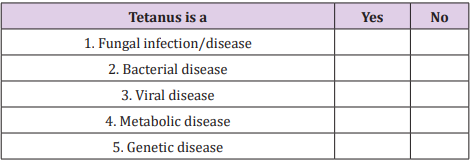
Table 2: Questionnaire to analyze awareness about ubiquity of Tetanu
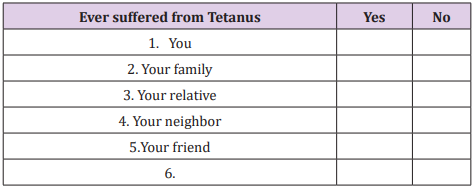
Table 3: Questionnaire to analyze awareness about ubiquity of Tetanu

Table 4: Questionnaire to evaluate perspective about treatment of Tetanus.

Statistical Analysis
Statistical analysis was performed by using MS Excel.
Results
Figures 1-4.
Discussion
Figure 1 shows the awareness of public about Tetanus that whether it is a viral, bacterial, fungal, metabolic or genetic disease. 96% of the subjects said that it is a bacterial disease. Figure 2 shows the ubiquity of Tetanus that whether the subjects themselves, their relative, friend, family member or neighbor have ever suffered from Tetanus or not? 4% of the subjects said that they have been suffered from Tetanus and 96% said that that they are not. 6% said that their family members have been infected by Tetanus and 94% answered No. 29% of the subjects said that their relative and neighbor have been infected by Tetanus and 71% answered No. 12% of the subjects said that their friends have been suffered from Tetanus and 88% answered No. Figure 3 shows the transference of Tetanus that whether it is transmitted through blood or from parents to off-springs. 55% of the subjects said that it is transmitted through blood and 45% said that it is not transmitted by blood. 1% of the subjects said that it transfers from parents to off-springs and 99% answered No. Figure 4 shows the treatment of Tetanus that whether it is treated by medicines, surgery or there is no need of treatment? 60% of the subjects said that it is treated through medicines and 40% answered No. 1% of the subjects said that it can be treated by surgery and 99% said No, that there is no need for surgery. 20% of the subjects said that there is no need of treatment for Tetanus and 80% answered No, that there is a need of treatment for Tetanus [1,2].
Figure 1: Awareness about Tetanus.
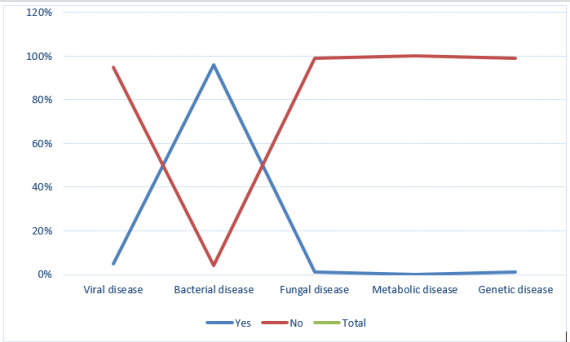
Figure 2: Ubiquity of Tetanus.
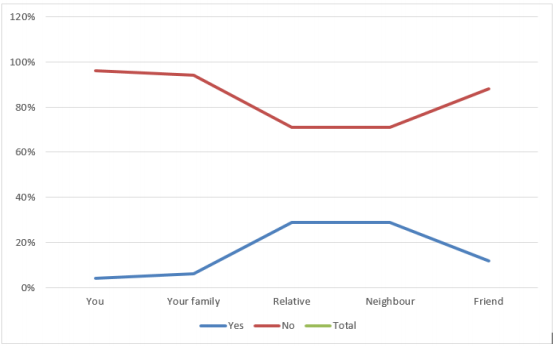
Figure 3: Tetanus transference.
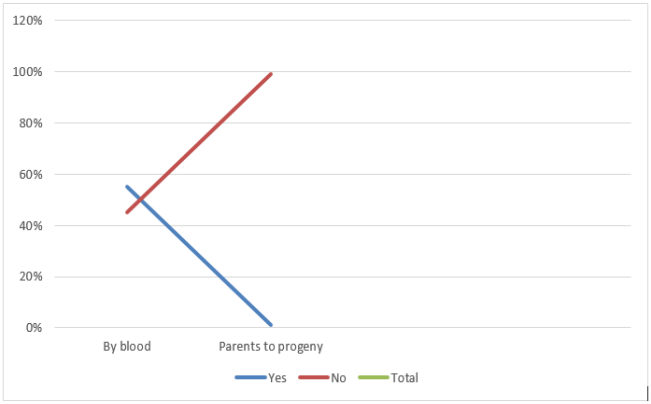
Figure 4: Treatment of Tetanus.
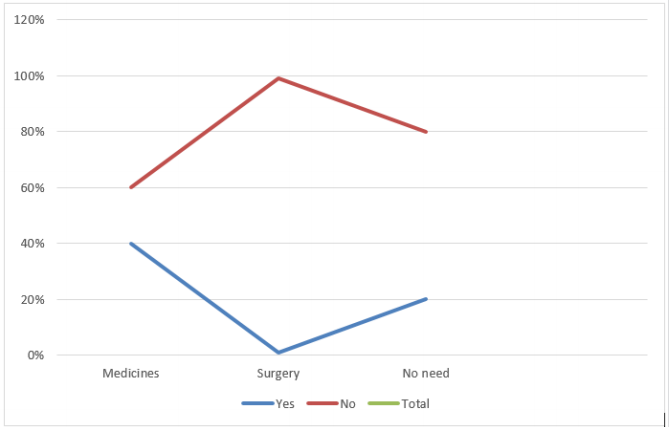
Questionnaire based studies have given an important advancement in the recent researches [3-10]. There are some other researches about Tetanus which shows the comparison between the Tetanus toxin in motor, sensory or adrenergic neurons and retrograde axonal transport of nerve growth factor. Some other studies show that iodegradable microspheres can also be used as controlled-release Tetanus toxoid delivery systems.
Conclusions
It was concluded form the present study that Tetanus is a bacterial disease. It is not transmitted from parents to children, and there is no need for surgery, although medicines and vaccines can be given.
Isolation and Molecular Docking Studies of Dihydroimperialine as Butyrylcholinesterase Inhibitor from the Bulbs of Fritillaria Imperialis-https://biomedres01.blogspot.com/2021/03/isolation-and-molecular-docking-studies.html
More BJSTR Articles : https://biomedres01.blogspot.com


No comments:
Post a Comment
Note: Only a member of this blog may post a comment.